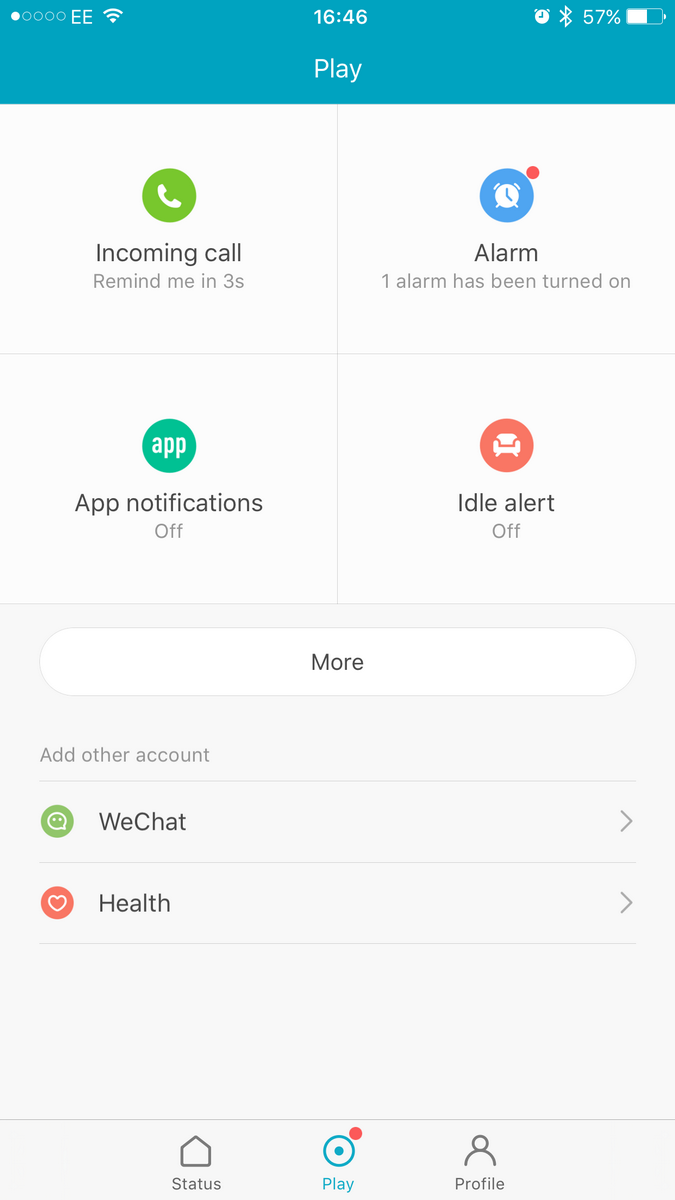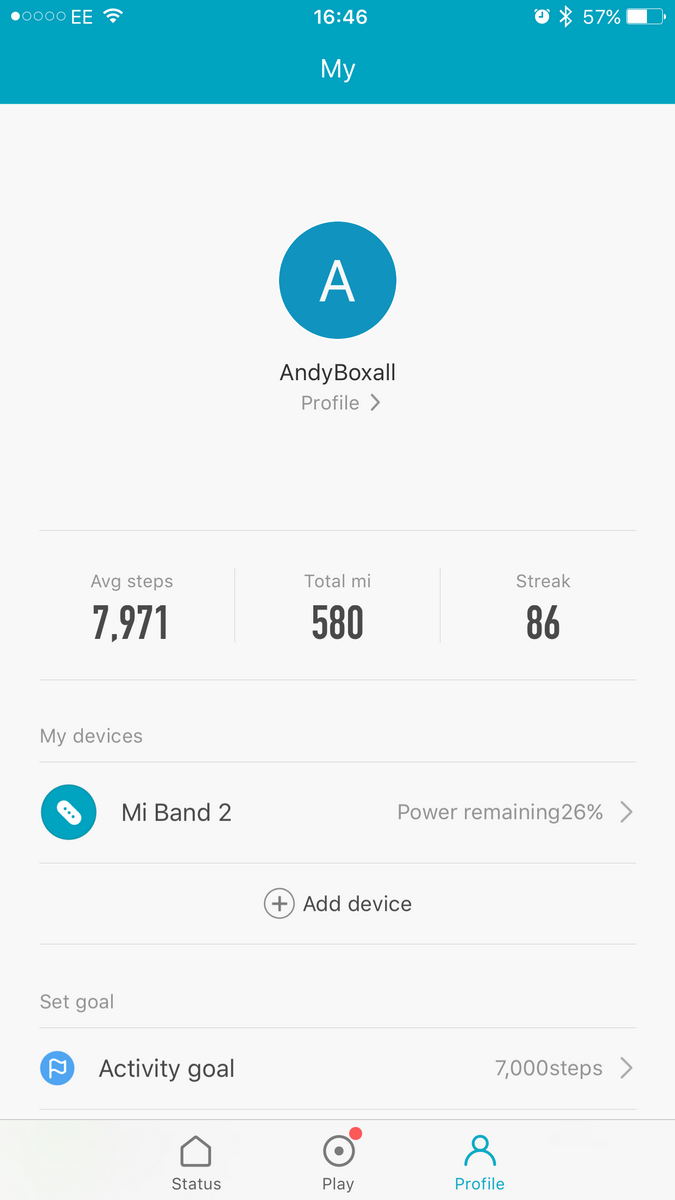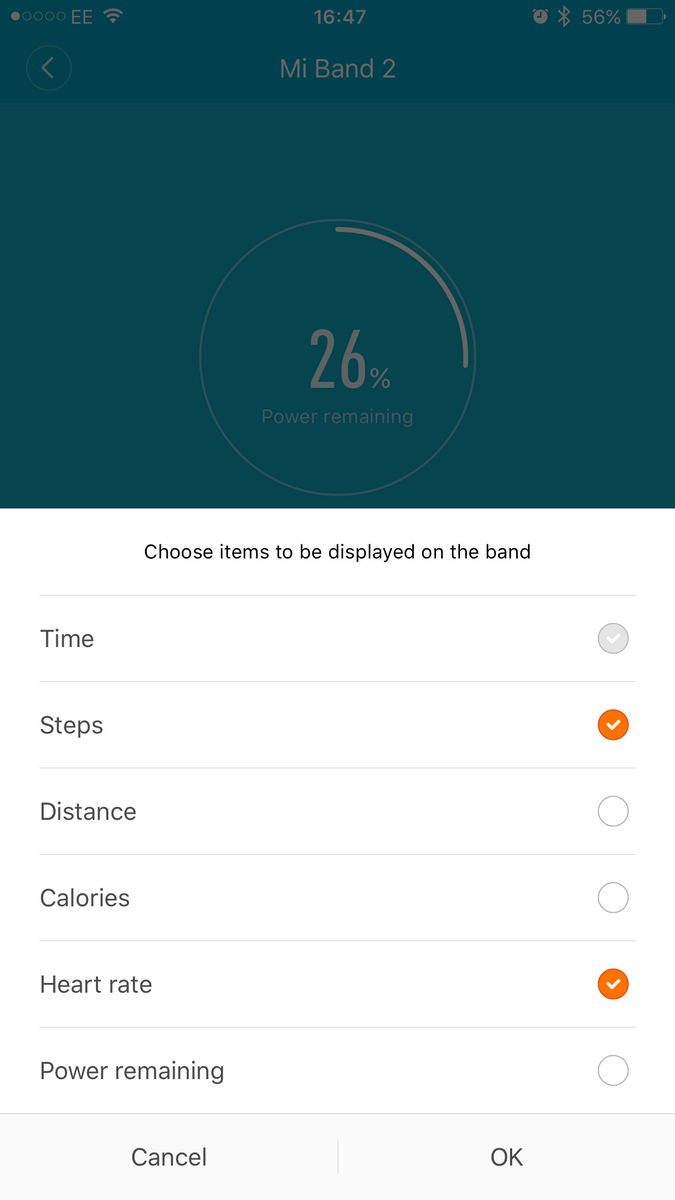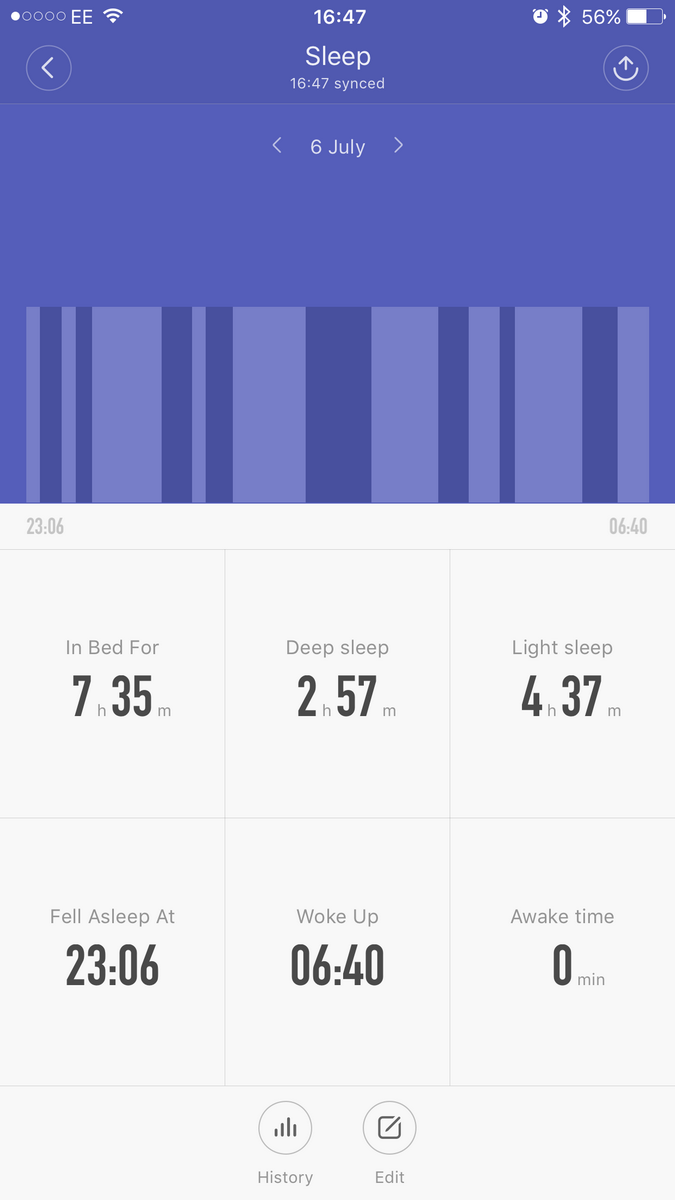- Bright screen
- Lightweight and comfortable
- Heart rate monitor
- Android and iOS support
- Long battery life
- No feedback or encouragement
- Import only
- Proprietary charger
Chinese electronics giant Xiaomi may be best known for smartphones such as the innovative Mi Mix, but it also makes a wide variety of other products, from televisions to drones. Sadly, the majority aren’t sold outside Asia, and many aren’t compatible with U.S. networks or systems. One Xiaomi product you can easily buy without such concerns is the Xiaomi Mi Band 2. It’s a fitness tracker with a heart rate sensor and a super-bright OLED screen, and a sequel to the simple, yet cheap original Mi Band. Extra features usually means an increase in price — but that’s not Xiaomi’s style at all.
There’s no shortage of fitness trackers, and although the Mi Band 2 is very affordable, has the wonderful simplicity of the original been lost — and does it still represent the value it once did?
Design and comfort
The Mi Band 2 looks very similar to the original Mi Band. There’s a central core module that pops into a slim, silicone strap, allowing you to swap it out for straps in different colors. Once the core is in place, it’s not going anywhere at all, and is more securely fastened in than the original Mi Band had been (its core would sometimes pop out unexpectedly). Although soft, the silicone isn’t floppy and is secured with a pop stud and small loop. The strap is also super secure, with almost zero chance of it coming loose or falling off.
The Mi Band 2 is easy to put on with one hand, and it’s considerably more compact than most modern Fitbit trackers, such as the Fitbit Blaze. Because of this it’s suitable for all wrist sizes, and doesn’t look out of place on the thin-wristed.
Once the Mi Band 2 is on, it’s quickly forgotten. It’s designed to be worn 24 hours a day to track activity and sleep, and it never became intrusive, uncomfortable, sweaty, or annoying. It happily slips under a shirt sleeve too. After wearing it on-and-off for a year, sometimes for a few weeks at a time, the silicone band still looks like new. It can really take a beating, without looking worse for wear.
Xiaomi has engineered the Mi Band 2 with an IP67 water resistance rating, so it’ll survive a swim, a shower, dust, and corrosion. I wore mine in the shower, and to wash the car (where it spent time in and out of buckets, being lightly sponged, and under a gentle hose spray) and it still works perfectly.
Perhaps the only odd thing is it would tend to slip round my wrist — I wear it relatively loosely — so the display is facing slightly away from my gaze. This centralizes the stud fixing under my wrist, so the movement may have to do with weight or the band’s center of gravity. The core module is larger than the first generation’s had been, but because it weighs only 7 grams, any additional weight isn’t noticeable.
Overall, the size makes it one of the most comfortable fitness trackers you can buy. One needs to wear a fitness tracker consistently for it to be of benefit, so comfort is extremely important.
Display and heart rate monitor
The most noticeable new feature on the Mi Band 2 is the display. Although small, it’s an OLED screen that’s incredibly bright, so it’s easily viewable at both night and when exposed to direct sunlight. It shows a variety of information, which can be customized through the supporting Mi app. Ours was set to show the time, steps taken, and heart rate measurement, but it’s easy to add calories burned, distance traveled, and battery status.
The excellent Mi Band 2 proves getting more tech doesn’t always mean paying more money.
A shiny panel covers the screen; it feels like plastic, and Xiaomi promises it’s scratch resistant and won’t attract many fingerprints. Despite being exposed to the elements on my wrist, it shows no sign of scuffs or marks, and it’s never a smudgy mess. During our first test of the Mi Band 2, our then current Fitbit Charge’s screen cover looked considerably worse for wear after only a few more weeks of use. A year on, and the OLED screen is equally bright and attractive, and has only picked up a few hairline scratches, which show in direct artificial light only.
Under the screen is a circular touchpad that cycles through the data feed. It’s not a button, and only requires a tap to operate. Get to the heart rate screen and it’ll start taking a measurement automatically. It’s an optical monitor, much like that used on other smartphones and wearables, mounted on the underside of the core. The company recommends that you wear the Mi Band 2 tightly against the skin when taking a reading. This is a good idea. I activated it by accident quite often, and due to it being loose on my wrist, I wasn’t getting any result. Although it can be used automatically during the night for improved sleep tracking, there’s no profile to use the heart rate sensor during a workout, except by starting it manually.
Mi app
Xiaomi’s official Mi app is compatible with Android and iOS, so regardless of the phone you use, the Mi Band 2 should work fine. It operated without a problem on both an iPhone 6S Plus and a Samsung Galaxy S7 Edge originally, and with an iPhone 7 Plus for our later tests. While there were connection issues during our first review with the iOS app, these have been cured, and it synced and updated without a problem on the iPhone 7 Plus. The app has also been regularly updated throughout the last year, mostly with bug fixes and performance improvements.
The app is quite basic. It collects data from the band and collates it in a series of graphs, one for steps and activity, the other for sleep. These are then put into historical graphs covering the day, week, and month. Significant exercise periods are highlighted each day, with the time, distance, and calories burned all shown. Sleep gets a similar treatment, with the amount of time spent in bed, a deep- and light-sleep phase split, and the time you went to sleep and woke up.
You can set a daily step count target and an ideal weight you’d like to achieve, and in a recent app update, lets you select one of two running profiles — indoor on a treadmill, or outdoor. This adds in continuous heart-rate monitoring during your workout, a feature missing from the earlier version of the app. Select either profile, and it’ll deliver zone alerts when you reach a set heart rate, and a pace alert for running outside. It’s also possible to use the heart rate monitor automatically during the night to gather more data. Both these features will obviously affect battery life. There is an alarm, but it’s not smart enough to wake you during a light-sleep phase, and the band will alert you of incoming calls, system notifications, or if you’ve been sitting still for too long.
Tap the “Play” button at the bottom of the screen, then the Behavior Tagging menu, to find an extensive list of exercise and activity programs, ranging from ping-pong and sit-ups, to brushing your teeth and driving. These are trackers, monitoring movement and heart rate continuously, to help build a picture of your day. We question their usefulness, because anything you do doesn’t show up in historical graphs, and unless it’s walking or running, doesn’t count towards your daily goals.
The app is attractive, minimalistic, and very logically laid out. It’s easy to use, and the pertinent information, such as step count, is immediately obvious when you launch it. However, the Mi app is entirely devoid of advice, encouragement, or feedback on your wellbeing, based on the data it collects. This is unfortunate, as it’s how value is measured in the overcrowded world of fitness trackers. After all, there’s a good chance you’re wearing one because you want to get fitter, lose weight, or get better sleep. Some trackers want to help you reach your goal, and offer guidance and motivation. With the Mi Band 2, you’re on your own.
Accuracy and battery
After an early firmware problem that resulted in an inaccurate step count, the Mi Band 2 has been faultless in reliability and accuracy. Its step count is in line with competitors, with the difference between them maxing at 100 steps. The heart rate sensor had always agreed with the Apple Watch, with the pair usually coming within a couple of beats-per-minute of each other.
One of the best things about the original Mi Band was its long battery life, and although there is more technology inside the Mi Band 2, the battery is rated for 20 days without a recharge. In reality, I got to 20 days use with the Mi Band 2 and the battery still had 49 percent energy remaining, which is superb. The core module must be removed from the strap and fitted into a proprietary charger to top up the battery. It’s very reliable too. After not charging it for a month, then bringing it back into service, it accepted the charge and lasted for at least another month before running out of power.
Price, warranty, and where to buy
Xiaomi still doesn’t sell the Mi Band 2 through its own online store, but you can get one from China through an importer. We originally got ours through GearBest.com, a well-known online importer of Chinese electronics, where it’s currently priced at only $22 with free shipping. Our model from GearBest arrived by courier a few days after ordering, and had been extremely well packaged.
Worried about what happens if the band goes wrong? GearBest provides a one-year warranty and free repair service, provided the product hasn’t been damaged through misuse, along with a 45-day money back guarantee. Because the Mi Band 2 comes from China, there are return shipping charges to consider in this process, and although some are covered, situations vary, so do bear it in mind.
Our take
The Mi Band 2 costs a fraction of most big-name fitness trackers, yet matches them on features and design, making it ideal for the regular gym goer.
Is there a better alternative?
Because it costs less than $25, the Mi Band 2 has few challengers that can meet it head-on. The Misfit Flash costs about the same, but doesn’t have a heart-rate monitor or a screen. The Moov Now costs nearly three times as much, and also can’t match the Mi Band 2 on features. However, the Moov Now does have a great app, with plenty of different exercise options, which is worth the extra money if you’ve got it.
If you have a bigger budget available, and want a more comprehensive app and fitness experience, while retaining a cool design and beautiful screen, we love the Samsung Gear Fit 2.
How long will it last?
The Mi Band 2 is water resistant, the core module stays well protected inside the silicone band, and even after several months of wearing it, the entire product shows few signs of wear. The battery is also still going strong after this amount of time, providing around a month’s worth of use before needing a charge. If the silicone band does break, or you fancy a color change, there are many cheap alternatives available online.
Should you buy it?
Yes. It’s light, durable, inconspicuous, easy-to-use, has a beautiful bright screen, and at less than $25 it’s astonishing value for a heart-rate monitor-equipped band. However, we want value both in terms of price and from the feedback and guidance we get in exchange for wearing the band all day long. Xiaomi has updated the Mi Band 2’s app with more workout options, making it more useful than ever; but it lacks motivational guidance, or extensive individual exercise tracking.
Whether this bothers you depends on your level of commitment to exercise. If you want to know only how far you walked, how much you slept, and to check your heart rate on a run, the Mi Band 2 is an excellent choice. However, if you’re a fitness fanatic, and want to track specific exercises, get feedback on your progress, and encouragement to keep going, then the Mi Band 2 will disappoint. This is a common problem with fitness trackers though, and not unique to the Mi Band 2 or Xiaomi’s app.
Update: We’ve revisited the Xiaomi Mi Band 2 to see if it still represents the superb value for money that it did on its release, almost a year ago. Added in new Our Take sections. By Andy Boxall on May 18.














